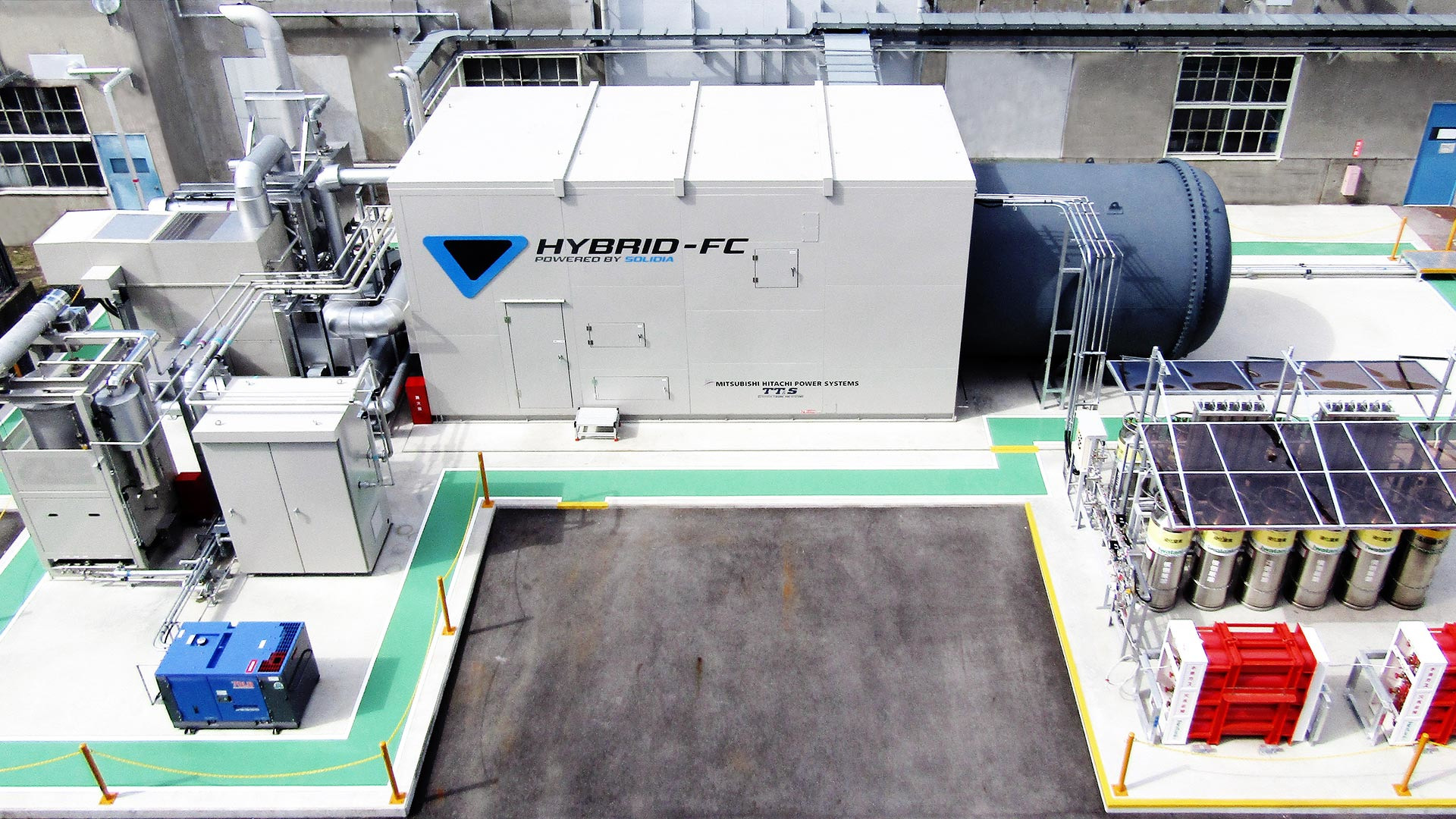

Toyota is one of the biggest proponents of hydrogen fuel cells. In addition to the Mirai fuel cell car, it’s building fuel cell-powered buses for Japan, and even experimenting with a fuel cell semi truck. But even Toyota has to admit that hydrogen power still has issues. Specifically, the hydrogen part. Lack of large-scale hydrogen production and the infrastructure to distribute the fuel remains a major drawback for fuel-cell vehicles. So Toyota is investigating a way to power its fuel cells with something different: natural gas.
The automaker recently installed a prototype hybrid fuel-cell system to provide power at its Motomachi Plant in Japan. Motomachi builds the Mirai, and built the Lexus LFA supercar before that. The system splits natural gas into hydrogen and carbon monoxide, which are then used to provide electrical power.
The prototype hybrid system actually uses both fuel cells and a micro gas turbine to generate power. The turbine provides oxygen to the fuel cell in the form of compressed air. The oxygen reacts with the hydrogen and carbon monoxide to create electricity. Waste heat from the system is used to create additional power, and Toyota says the turbine is powered by leftovers from the process that splits natural gas into hydrogen and carbon monoxide.
Toyota claims the system is capable of generating 250 kilowatts of power, with 53 percent efficiency using only the fuel cell. Factoring in the use of waste heat to create power increases the system’s overall efficiency to 65 percent, Toyota says, making it more efficient than a regular fuel cell. The fuel cell features a novel solid-oxide design that doesn’t require a platinum catalyst, according to Toyota, and it operates at lower temperatures than conventional fuel cells.
Nissan unveiled a prototype vehicle powered by solid-oxide fuel cells last year. It was a converted e-NV200 van that used the fuel cell stack to provide power to an onboard battery pack. Unlike the Toyota system, Nissan’s used ethanol as the base fuel to create hydrogen. But in both cases, the goal was to find an alternative to straight hydrogen in order to make fuel-cell vehicles more practical.
Natural gas is easier to get ahold of than hydrogen, especially in the U.S., where massive quantities of it are extracted from the ground through the controversial “fracking” process. While it produces lower levels of emissions than gasoline or diesel, natural gas still contributes to climate change. Another problem is that, while natural gas is easy to produce, it faces the same fueling infrastructure problems as hydrogen. That’s why natural gas passenger cars haven’t really taken off.
Toyota did not discuss any plans to use its hybrid fuel-cell system in a vehicle. Right now, it’s concentrating on stationary electricity generation. That may prove a more practical use of the technology, as the infrastructure to provide natural gas as a fuel for power plants or to heat buildings already exists.